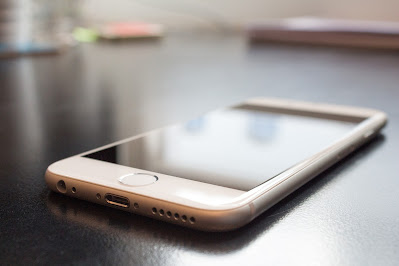iPhone vs Android: Exploring 5 Key Differences
The battle between iPhone and Android has been ongoing for years, with users fiercely
advocating for their preferred platform. Both iPhone and Android devices have
their strengths and weaknesses, catering to different user preferences. In this
article, we will explore five key differences between iPhone and Android
devices, shedding light on their distinctive features and experiences.
One of the most prominent differences between
iPhones and Android devices is their operating systems and user interfaces.
iPhones run on Apple's iOS, known for its clean and intuitive interface. iOS
offers a consistent user experience across all Apple devices, with seamless
integration and access to exclusive Apple services. On the other hand, Android devices
utilize the Android operating system, which provides a more customizable and
flexible user interface. Android offers a wide range of options for customization,
allowing users to personalize their device's appearance and behavior to a
greater extent.
Ecosystem and Integration:
Another significant difference lies in the
ecosystems and integration surrounding iPhone and Android devices. iPhones are
tightly integrated with Apple's ecosystem, including services like iCloud,
iMessage, FaceTime, and AirDrop. This integration allows for seamless
synchronization of data, effortless sharing between Apple devices, and a
cohesive user experience. Android devices, on the other hand, are part of the
Google ecosystem, which includes services like Google Drive, Google Photos,
Google Assistant, and Google Play. Android users can benefit from deep
integration with Google services, extensive cloud storage options, and access
to a vast app library.
Hardware and Design:
When comparing iPhone and Android devices, the
hardware and design aspects differ significantly. iPhones are known for their
premium build quality, attention to detail, and sleek aesthetics. Apple
meticulously designs its devices, ensuring a cohesive and seamless user
experience. On the other hand, Android devices come in a variety of shapes,
sizes, and designs as they are manufactured by different companies. This
diversity provides users with more choices in terms of device appearance, form
factors, and hardware specifications. Android devices also often offer features
like expandable storage, dual SIM capabilities, and headphone jacks, which may
not be present in all iPhone models.
App Ecosystem and Availability:
The app ecosystems of iPhone and Android
devices showcase contrasting characteristics. The Apple App Store is known for
its strict guidelines and a curated selection of apps, which ensures a high
level of quality and security. iPhone users can enjoy early access to new apps and timely updates due
to the centralized nature of the App Store. On the other hand, the Google Play
Store offers a vast selection of apps, including niche and specialized
applications. The open nature of the Android platform allows for greater
freedom for developers to create and distribute their apps, resulting in a
broader range of options for Android users.
Privacy and Security:
Privacy and security are areas where iPhone and
Android devices differ significantly. Apple has built a strong reputation for
prioritizing user privacy and data security. iPhones come with features like
Face ID or Touch ID for secure biometric authentication, hardware-level
encryption, and regular software updates to address security vulnerabilities promptly.
On the other hand, Android devices offer more flexibility but may be perceived
as having weaker privacy and security due to the open nature of the platform.
However, Google has made significant efforts to enhance Android's security,
implementing features like Google Play Protect and offering regular security
patches.
Conclusion:
In the iPhone vs. Android debate, both
platforms offer unique experiences and cater to different user preferences.
iPhones provide a tightly integrated ecosystem, a user-friendly interface, and
a refined hardware-software combination. On the other hand, Android devices
offer greater customization options, a diverse range of hardware choices, and
access to a vast app library. Ultimately, the choice between iPhone and Android
boils down to personal preferences, ecosystem preferences, desired




0 Comments